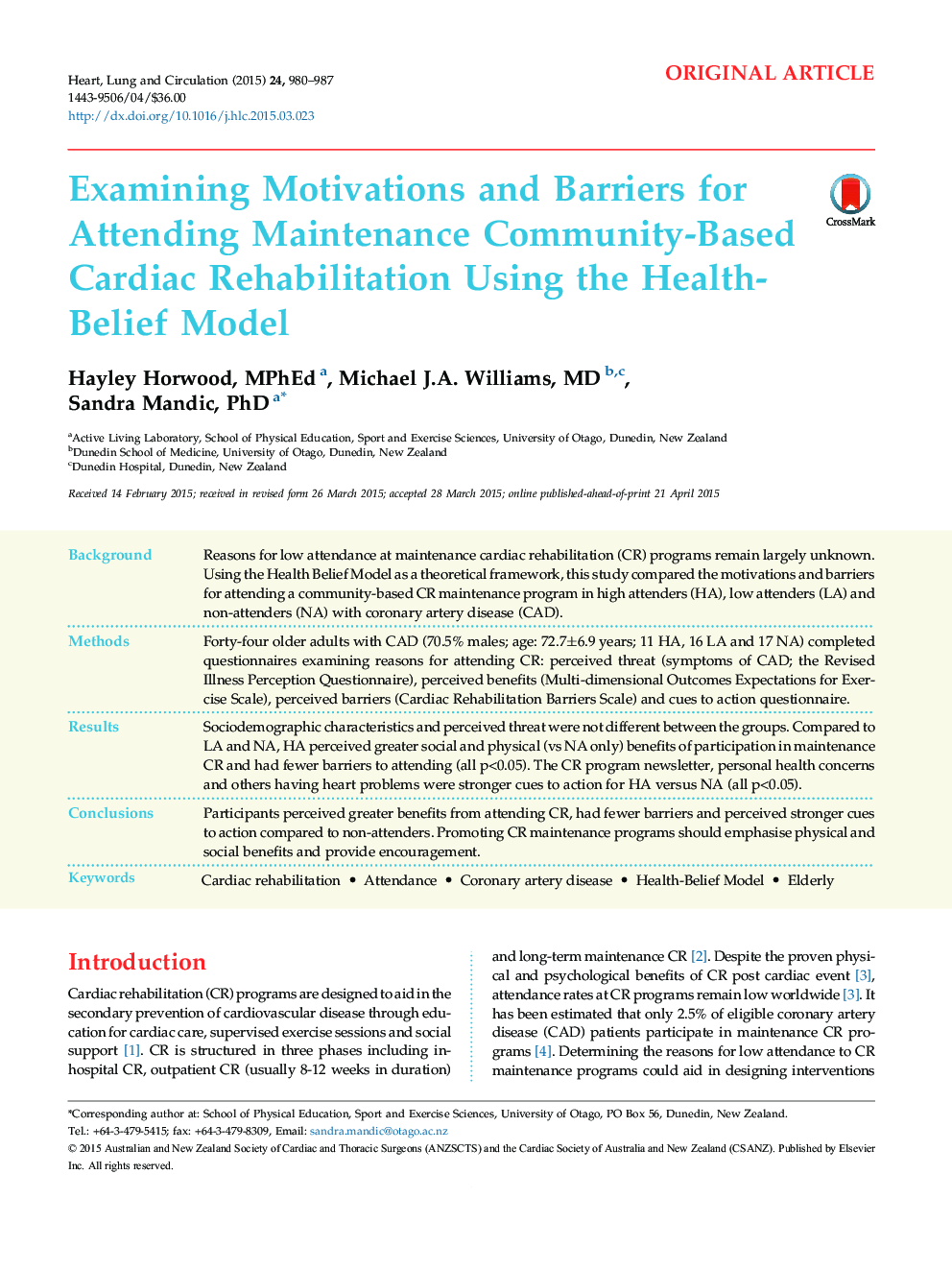| Article ID | Journal | Published Year | Pages | File Type |
|---|---|---|---|---|
| 2917723 | Heart, Lung and Circulation | 2015 | 8 Pages |
BackgroundReasons for low attendance at maintenance cardiac rehabilitation (CR) programs remain largely unknown. Using the Health Belief Model as a theoretical framework, this study compared the motivations and barriers for attending a community-based CR maintenance program in high attenders (HA), low attenders (LA) and non-attenders (NA) with coronary artery disease (CAD).MethodsForty-four older adults with CAD (70.5% males; age: 72.7±6.9 years; 11 HA, 16 LA and 17 NA) completed questionnaires examining reasons for attending CR: perceived threat (symptoms of CAD; the Revised Illness Perception Questionnaire), perceived benefits (Multi-dimensional Outcomes Expectations for Exercise Scale), perceived barriers (Cardiac Rehabilitation Barriers Scale) and cues to action questionnaire.ResultsSociodemographic characteristics and perceived threat were not different between the groups. Compared to LA and NA, HA perceived greater social and physical (vs NA only) benefits of participation in maintenance CR and had fewer barriers to attending (all p<0.05). The CR program newsletter, personal health concerns and others having heart problems were stronger cues to action for HA versus NA (all p<0.05).ConclusionsParticipants perceived greater benefits from attending CR, had fewer barriers and perceived stronger cues to action compared to non-attenders. Promoting CR maintenance programs should emphasise physical and social benefits and provide encouragement.
